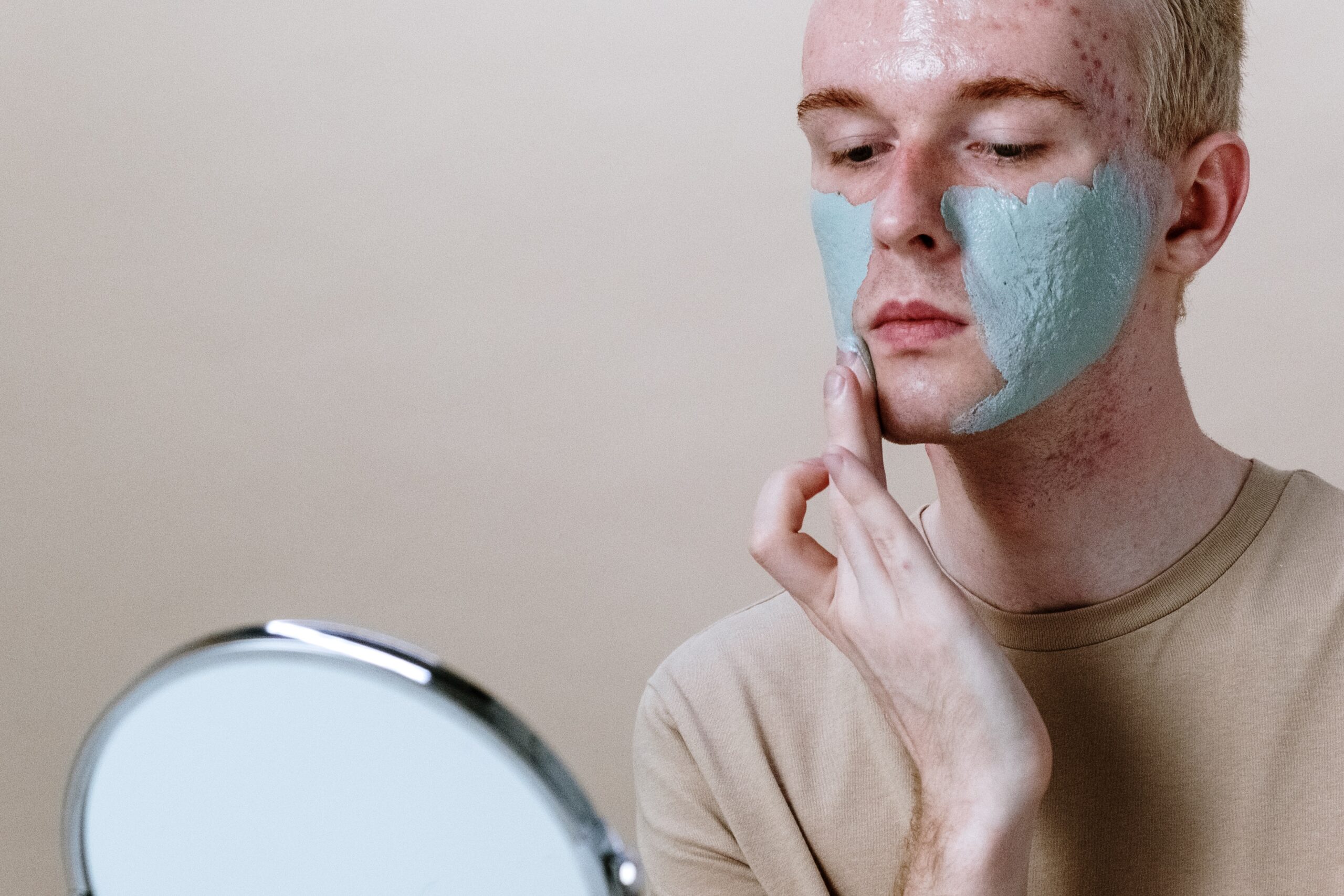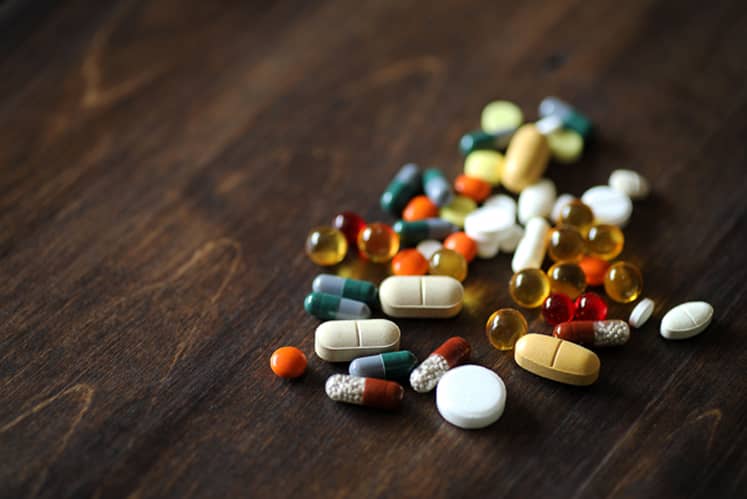
Laser and Phototherapy Treatments
Laser and Phototherapy treatments are still in the early stages of development and their long-term safety and effectiveness is still unknown. These treatments can decrease P. acnes, inflammation, and gland function. Such treatments are especially useful for individuals who cannot tolerate other acne treatments or for those whose acne has not resolved with conventional therapies.

Types of Laser Treatments
- Potassium titanyl phosphate (KTP) green light laser.
- Pulsed dye laser (PDL).
- Infrared (IR) laser.
- 1320 nm laser.
- 1450 nm diode laser.
- 1540 nm erbium laser.
Types of phototherapies
- Intense pulsated light (IPL).
- Photodynamic therapy (PDT).
- LED blue-red light.
- Photopneumatic technology.
Light (Photo) & Laser Therapies
Light and laser treatment options have been used to treat cystic acne. Some of the most commonly used ones are intense pulsed light (IPL), pulsed dye lasers (PDL), potassium titanyl phosphate (KTP) lasers, as well as broad-spectrum continuous wave visible light (blue and red).
Light therapy works on the basis of the observation that it causes damage to the structure of the membrane in the bacterium P. acnes and results in the death of their cells. Lab studies done on this bacterium have shown that the rate of growth does actually get reduced in 24 hours following treatment with one illumination of intense blue light at a dose of 407-420 nm. The growth continued to be reduced as much as 4 to 5 times more with a dose of a 2nd as well as a 3rd illumination session with intense blue light.
While blue light has been seen to have the ability to reduce P. acnes, it is not been very effective in penetrating the skin to any great depth. In contrast, red light which is not very efficient in damaging P. acnes is able to reach deeper into the sebaceous glands in the skin and has been suggested to have an anti-inflammatory action (brought by the release of cytokines from macrophages in the acne lesion).
The use of a mixture of blue and red light treatment has been found to be much more efficient at decreasing the number of inflammatory cystic acne lesions when compared to treatment using only benzoyl peroxide or treatment using only blue light illumination.
In summary, blue light is quite efficient at carrying out porphyrin activation and reducing the P. acne bacteria, while red light is able to go much deeper into the skin and can control as well as reduce inflammation (by starting the process of cytokine release). Therefore, it is generally recommended to use a mixture of both methods to produce a better response to this treatment option for acne.
Intense Pulsed Light (IPL) Techniques
In comparison to single color light therapy described above, Intense Pulsed Light (IPL) techniques make use of polychromatic light. The devices used for IPL are made up of flash lamps together with computer-monitored capacitor banks that provide the pulsed polychromatic light. The further treatment is dependent on user-based parameters like the range of wavelength by using filters, fluence, duration of the pulse as well as the pulse intervals.
In addition to being able to emit wavelengths like blue and red, which have the ability to photoactivate porphyrins as well as target the growth of P. acnes, the broad spectrum wavelength delivered by these IPL devices is set to cause photo thermolysis. During this process, the absorbing light generates sufficient heat inside the skin, as well as energy, so as to be able to have an impact on the blood vessels which supply sebaceous glands. As a result, it is able to decrease the level of sebum production.
Some research studies done on the efficiency of IPL as an anti-acne treatment have produced mixed results. A few of the research studies have shown some degree of short-term improvement in inflammatory as well as non-inflammatory acne lesions through the use of IPL. Some other research studies have demonstrated that the use of only IPL and IPL combined with photodynamic treatment options is able to provide a significant reduction in the number of non-inflammatory acne lesions, but does not show the same effectiveness against inflammatory acne lesions. In addition, as compared to other light sources, IPL has been found to be less efficient at decreasing the number of acne lesions than the impact produced by pulsed dye lasers, but has been found to be more efficient than blue-red combined light-emitting diodes. Side effects of the treatment may include some pain, swelling, erythema, blistering, and crusting.
Laser Therapeutic Options For Acne Treatment
Lasers are also used in acne treatment. As compared with light treatment, lasers have the capability of concentrating coherent light onto a tiny section of tissue. Potassium Titanyl Phosphate (KTP) 532 nm green light pulsed laser therapy has been found to have higher penetration in comparison to blue light and is known to activate porphyrins for targeting P. acnes.
KTP has demonstrated to have a short-term impact for the improvement of severe acne while showing little to no side effects. However, there are not many randomized controlled trial studies on its efficiency. In the same way, the impact of Pulsed Dye Laser (PDL) at 585 nm yellow light on decreasing the number of acne lesions is still a matter of debate.
PDL has been documented to significantly reduce the number of overall acne lesions as well as inflammatory lesions when compared to other treatments in a research study. However, in another study, there were no significant differences between PDL treated patients and those undergoing no treatment at all. In addition, combining PDL with topical agents used for acne treatment showed the same results as the use of topical treatment as the only therapy.
Photodynamic Therapy
Photodynamic Therapy (PDT) is the usage of aminolevulinic acid (ALA), methyl-aminolevulinic acid (MAL), or any other photosensitizing media for improving the impact of subsequent light or laser treatments that are used for resolving acne.
Usage of illumination following ALA treatment causes cell damage in the acne-causing bacterium, P. acnes. ALA also promotes porphyrin secretion in P. acnes.
Laboratory cultures which have been grown with exposure to ALA have shown a 5-fold reduction in the culture’s ability to grow once they have been treated using 3 rounds of illumination with higher intensity blue light. In one research study, the researchers were able to demonstrate that an acne intervention in which 20% ALA treatment was followed up using red light therapy showed significant reduction in the numbers of inflammatory acne lesions on the back. A sustained decrease of acne was seen even 20 weeks after the use of several sessions of treatments. In terms of internal impacts of this intervention, the sebaceous glands were found to also be 45% reduced in size. In addition, ALA-PDT combined treatments reduced P. acnes fluorescence, which is generally an indicator for bacterial growth and also reduced production of sebum at the 20 week mark after this treatment.
Research Studies on Photodynamic Therapy (PDT)
There are some other studies which have found that even though ALA-PDT treatment using red light decreased the overall numbers of inflammatory acne lesions, this treatment protocol did not stop P. acnes growth or decrease the levels of sebum production. Such variable results between research studies can be explained by the small numbers of patients examined in the two studies, the variable types of total treatments for each patient well as the evidence from previous studies.
ALA treatment combinations with many kinds of light have also been examined and these include pulsed dye laser therapy, KTP laser, blue light, intense pulsed light and in some cases pretreatment using radiant infrared light. Studies that have carried out direct comparisons of ALA-PDT treatments with IPL, IPL as well as radio frequency (RF) energy and blue light, have been able to show that the most level of reduction of acne lesions is seen using ALA and IPL, while the least level of efficiency was seen using treatment with blue light. However, even though these studies with Photodynamic treatment have shown very promising results, they were done using just a small number of patients.
Photodynamic Therapy (PDT) Side Effects
ALA treatment combinations with many kinds of light have also been examined and these include pulsed dye laser therapy, KTP laser, blue light, intense pulsed light and in some cases pretreatment using radiant infrared light. Studies that have carried out direct comparisons of ALA-PDT treatments with IPL, IPL as well as radio frequency (RF) energy and blue light, have been able to show that the most level of reduction of acne lesions is seen using ALA and IPL, while the least level of efficiency was seen using treatment with blue light. However, even though these studies with Photodynamic treatment have shown very promising results, they were done using just a small number of patients.
Other ways of easing ALA related side effects involve reduction of the application time. Some research studies have found that using ALA incubation times of 30 minutes or 3 hours has shown a significant improvement in inflammatory acne lesions, with the longer time frame being more efficient at decreasing the number of acne lesions and also reducing sebum secretion. However, shorter incubation times with ALA treatments is likely to reduce adverse side effects while maintaining its efficacy.
As an option for ALA treatment, methyl-aminolevulinic acid (MAL), a lipophilic derivative of ALA, has been found to have more penetration power as well as selectivity in skin lesions. However, at present, more research needs to be carried out to compare these two photosensitizers to determine how to optimize ALA or MAL application in acne treatment while maximizing efficiency and minimizing side effects.
Latest articles


Hormonal Acne Treatment with Topical Creams
Acne Expert Staff
August 5, 2023

Cystic Acne on the Back: Best Treatment Options
Acne Expert Staff
August 5, 2023

Top Supplements for Treating Cystic Acne
Julia Thompson
August 4, 2023

Acne Prevention Through Proper Hygiene: A Comprehensive Guide
Julia Thompson
August 3, 2023
Recommended For You
Menu